Vanilla

Beez Neez now Chy Whella
Big Bear and Pepe Millard
Thu 12 Sep 2013 22:57
|
Vanilla
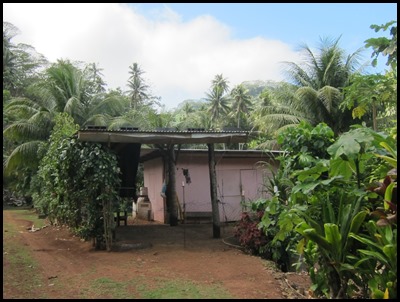
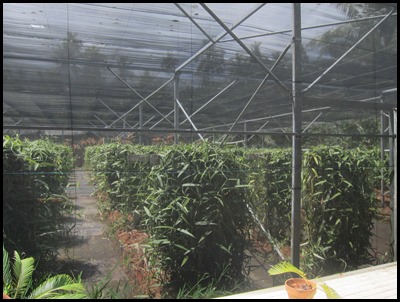 Devar left the main ‘track’ and headed
to grandfathers house to see his vanilla plantation.
Vanilla is a flavour derived from
orchids of the genus Vanilla, primarily from the Mexican species which is
flat-leaved. Pre-Columbian Mesoamerican people cultivated the vine of the
vanilla orchid, called tlilxochitl by the Aztecs, and Spanish conquistador
Hernán Cortés is credited with introducing both vanilla and chocolate to Europe
in the 1520’s. Initial attempts to cultivate
vanilla outside Mexico and Central America proved futile because of the
symbiotic relationship between the plant and its natural pollinator, the local
species of Melipona bee. In 1837, Belgian
botanist Charles François Antoine Morren discovered this fact and pioneered a
method of artificial pollination. His method proved financially unworkable. In
1841, Edmond Albius, a 12-year-old slave who worked on Réunion island in the
Indian Ocean, discovered the plant could be hand-pollinated. Hand-pollination
then set the plant on a global road.
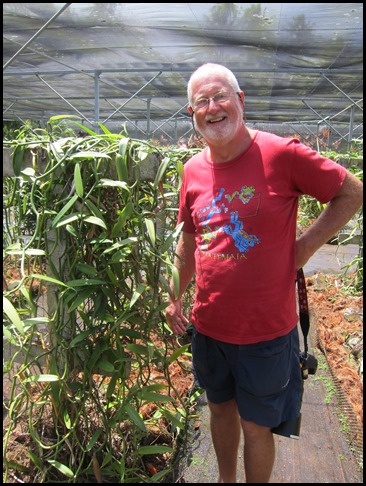 Vanilla (vanilla tahitensis), grows like a
vine.
Vanilla is the second most expensive
spice after saffron, because growing the vanilla seed pods is labour-intensive.
Despite the expense, vanilla is highly valued for its flavour, which author
Frederic Rosengarten, Jr. described in The Book of Spices as "pure, spicy, and
delicate" and its complex floral aroma depicted as a "peculiar bouquet". As a
result, vanilla is widely used both commercially and domestically - perfume
manufacture, aromatherapy oils, body lotion, baking, flavouring, especially good
in ice cream and many other uses.
The Totonac people, who inhabit the
East Coast of Mexico in the present-day state of Veracruz, were the first to
cultivate vanilla. According to Totonac mythology, the tropical orchid was born
when Princess Xanat, forbidden by her father from marrying a mortal, fled to the
forest with her lover. The lovers were captured and beheaded. Where their blood
touched the ground, the vine of the tropical orchid grew.
 The vanilla
flower.
Vanilla was completely unknown in the
Old World before Cortés. Spanish explorers arriving on the Gulf Coast of Mexico
in the early 16th century gave vanilla its current name. Spanish and Portuguese
sailors and explorers brought vanilla into Africa and Asia later that century.
They called it vainilla, or "little pod". The word vanilla entered the English
language in 1754, when the botanist Philip Miller wrote about the genus in his
Gardener’s Dictionary.
 Devar points to the female ‘part’.
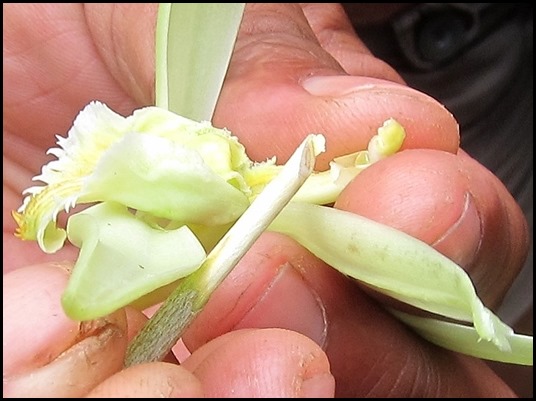 Devar gently unrolls the male ‘part’
scrapes the pollen off and deposits it on the female
‘part’, this has to be done as each flower appears. This process has a wonderful
word – fecundation, to produce a fruit, the
vanilla bean.
 The bean.
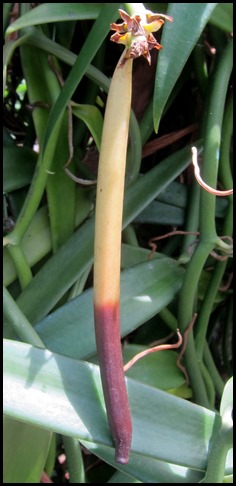 
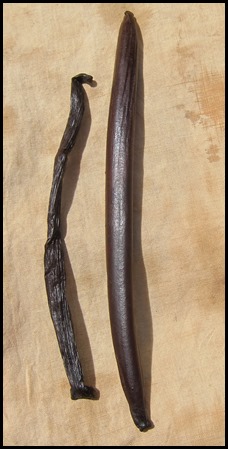 Ripening
and to fully brown when they can be picked, then
many, many weeks to lose enough water to be ready to
sell.
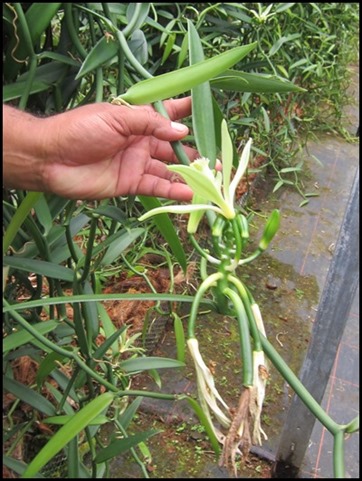 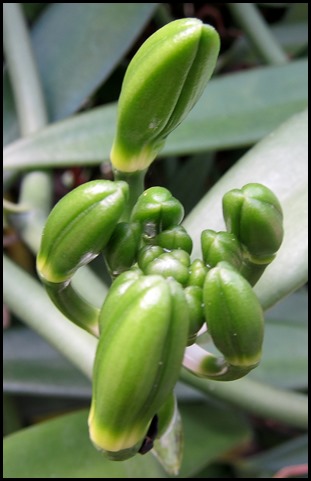 Each vine can
produce many flowers.


 There is no way to predict how many
beans will appear. A variety of lengths, loads or few but very
long.
 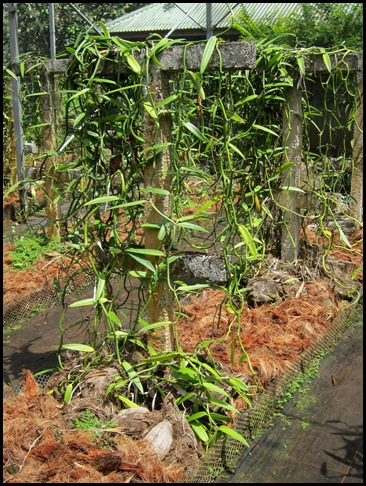 Grandfather strips out plants as soon
as they are nine and starts again.
The vanilla fruit grows quickly on
the vine, but is not ready for harvest until maturity - approximately six to
nine months. Harvesting vanilla fruits is as labour-intensive as pollinating the
blossoms. Immature dark green pods are not harvested. Pale yellow discoloration
that commences at the distal end of the fruits is an indication of the maturity
of pods. Each fruit ripens at its own time, requiring a daily harvest. To ensure
the finest flavour from every fruit, each individual pod must be picked by hand
just as it begins to split on the end. Overmatured fruits are likely to split,
causing a reduction in market value. Its commercial value is fixed based on the
length and appearance of the pod.
If the fruit is more than six inches
in length, it belongs to first-quality product. The largest fruits greater than
six inches and over eight inches are usually reserved for the gourmet vanilla
market, for sale to top chefs and restaurants. If the fruits are between four
and five inches long, pods are under the second-quality category, and fruits
less than four inches are third-quality category. Each fruit contains thousands
of tiny black vanilla seeds. Vanilla fruit yield depends on the care and
management given to the hanging and fruiting vines. Any practice directed to
stimulate aerial root production has a direct effect on vine productivity. A
five-year-old vine can produce between 3.3 and 6.6 pounds of pods, and this
production can increase up to 13 pounds after a few years.
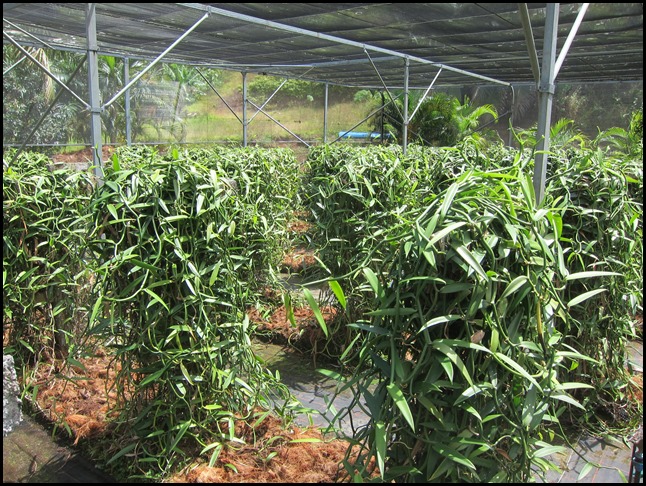 This
plantation used to produce two hundred tons of vanilla beans each year,
with a staff of three he now has a yield of five hundred pounds.
The top vanilla producers in tonnes in 2011 were:
1. 3,500 - Indonesia
2. 3,000 - Madagascar
3. 1,385 - China
4. 362 - Mexico
5. 287 - Turkey
6. 202 - Tonga
7. 52 - French
Polynesia
8. 42 - Cosmoros
9. 24 - Uganda
10. 20 - Malawi
11. 11 - Guadeloupe
12. 10 - Kenya
13. 10 - Zimbabwe
14. 8 – Reunion
The market price of vanilla rose
dramatically in the late 1970’s after a tropical cyclone ravaged key croplands.
Prices remained high through the early 1980’s despite the introduction of
Indonesian vanilla. In the mid-1980’s, the cartel that had controlled vanilla
prices and distribution since its creation in 1930 disbanded. Prices dropped 70%
over the next few years, to nearly US$20 per kilogram; prices rose sharply again
after tropical cyclone Hudah struck Madagascar in April 2000. The cyclone,
political instability, and poor weather in the third year drove vanilla prices
to an astonishing US$500 per kilogram in 2004, bringing new countries into the
vanilla industry. A good crop, coupled with decreased demand caused by the
production of imitation vanilla, pushed the market price down to the $40 per
kilogram range in the middle of 2005. By 2010, prices were down to US$20/per
kilo.
Madagascar (especially the fertile
Sava region) accounts for much of the global production of vanilla. Mexico, once
the leading producer of natural vanilla with an annual yield of 500 tons,
produced only 10 tons of vanilla in 2006. An estimated 95% of "vanilla" products
are artificially flavored with vanillin derived from lignin instead of vanilla
fruits.
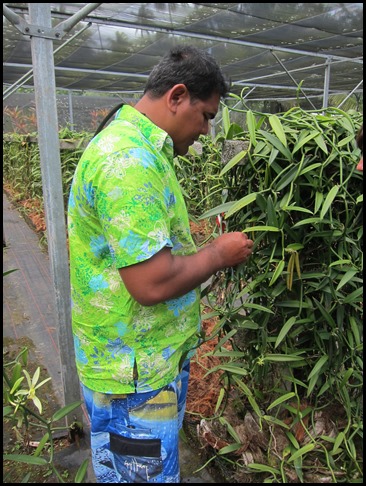 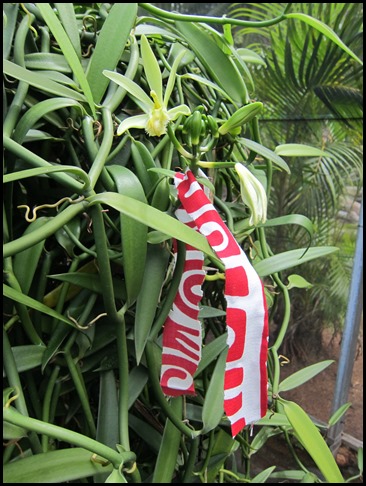
 Devar has no interest in taking over
the business, he prefers to run his tours, hire out a few dune buggies and go
fishing in the late afternoon. That said, he naturally fecundated any flower he passed
and moved the markers to show the workers where to
begin tomorrow. This local variety is world
renowned for it’s powerful fragrance and strong taste. Very rich in oil, its
beans are shinier and more scented than other species. Today, Raiatea and Tahaa
produce three quarters of the local production.
Tahitian vanilla is the French
Polynesian type Vanilla tahitiensis strain. Genetic analysis shows this species
is possibly a cultivar from a hybrid-cross of Vanilla planifolia and Vanilla
odorata. The species was introduced in 1848 by French Admiral François Alphonse
Hamelin to French Polynesia from the Philippines, where it was introduced from
Guatemala by the Manila Galleon trade.
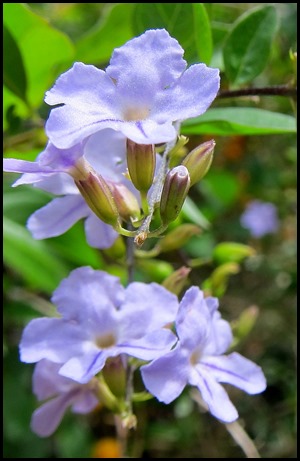 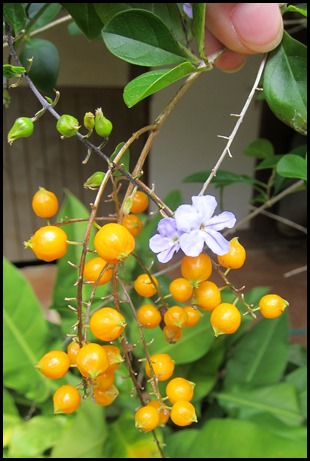 We steeped outside and found a really
pretty plant with orange berries. Devar didn’t name it, but pointed to the
sticks produced when the berries fall off. These make the perfect fecundation sticks.
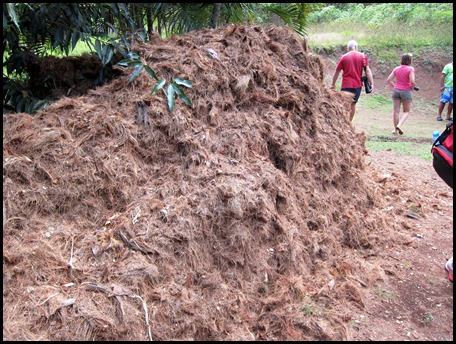 As we headed back to
the van we passed a mound of coconut husks, ready to
be put around the base of the vanilla plants. This material holds an enormous
amount water, reducing the need to water to once every three days.
Vanilla grows best in a hot, humid
climate from sea level to an elevation of 1500 m. The ideal climate has moderate
rainfall, evenly distributed through ten months of the year. Optimum
temperatures for cultivation are 15–30 °C during the day and 15–20 °C during the
night. Ideal humidity is around 80%. However, since greenhouse vanilla is grown
near the equator and under polymer (HDPE) netting (shading of 50%), this
humidity can be achieved by the environment. Most successful vanilla growing and
processing is done in the region within 10 to 20° of the equator.
Soils for vanilla cultivation should
be loose, with high organic matter content and loamy texture. They must be well
drained, and a slight slope helps in this condition. Vanilla requires organic
matter, so three or four applications of mulch a year are adequate for the
plant.
Devar told us that to
begin a business costs an awful lot of money and time before the first yield.
The Government helps with set-up costs on a loan basis. Years ago there were
many co-operatives but over time they broke down, now there are only
independents. Grandfather has a calendar and visits various villages to sell his
beans. Devar takes many home where his wife Linda looks after the drying beans.
She puts them out in the sun for three hours a day, then wraps them in
protective cloths, lays them in a box, so they can sweat out their water
content.
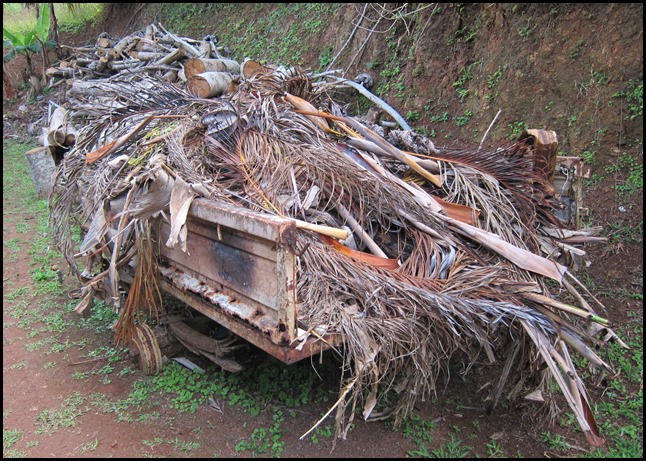 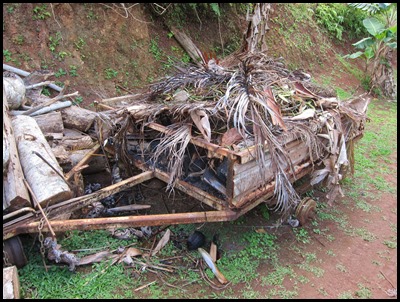
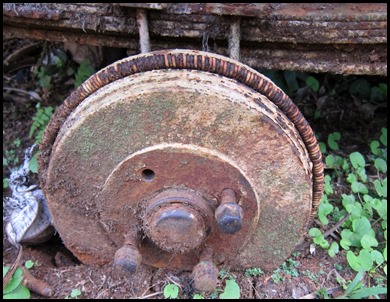 Grandfather entered a ‘One Careful Owner’ trailer, we thought vey
sweet.
 Yo approved
and then it was time to leave.
ALL IN ALL WHAT A
PLANT
AMAZINGLY LABOUR INTENSIVE, WE NOW UNDERSTAND ITS
COST |